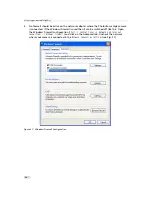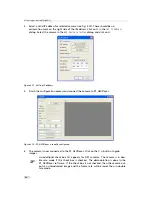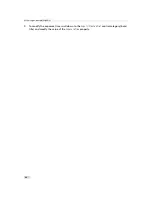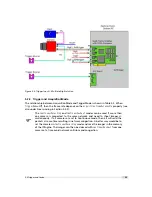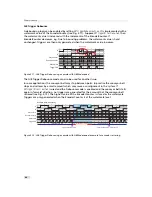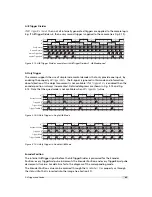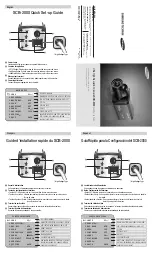
5 Functionality
5.1.2
Maximal Frame Rate
The maximal frame rate of the camera depends on the camera settings. The following factors
influence the maximal frame rate (see also Table 5.1):
•
The length of the exposure time: A shorter exposure time can lead to an increase in the
maximal frame rate.
•
ROI height: a smaller height ROI can lead to an increase in the maximal frame rate.
The maximal frame rate of the camera can be determined by a frame rate calculator in the
support section of the Photonfocus web page www.photonfocus.com. The maximal frame rate
with the current camera settings can be read out by the camera register
AcquisitionFrameRateMax
in PF_GEVPlayer or with the SDK.
To avoid a sensor artifact, the exposure must start at a fixed position from the
start of the read out of one row. Therefore the exposure start must be delayed
by a time TExpDel which can be as long as the read out of one row.
Exposure time < read out time
When the exposure time is smaller than the read out time then the maximal frame rate
depends only on the height of the ROI (see Fig. 5.1).
MaxFrameRate = 1 / ReadoutTime
ReadoutTime = h * 28.8
µ
s
T
r i g g e r
E x p o s u r e
R e a d o u t
F r a m e < n >
F r a m e < n + 1 >
E
x p o s u r e T i m e
R e a d o u t T i m e
Figure 5.1: Read out timing 1: exposure time smaller than read out time
32
Summary of Contents for MV1-R1280-50-G2 Camera Series
Page 6: ...CONTENTS 6...
Page 10: ...2 Introduction 10...
Page 14: ...3 How to get started GigE G2 Figure 3 3 PFInstaller components choice 14...
Page 30: ...4 Product Specification 30...
Page 51: ...Figure 5 19 Crosshairs Example with different grey values 5 6 Crosshairs 51...
Page 72: ...6 Hardware Interface 72...
Page 84: ...7 Software 84...
Page 88: ...9 Warranty 88...
Page 90: ...10 References 90...
Page 94: ...B Camera Revisions 94...
Page 95: ...C Document Revision History Revision Date Changes 1 0 April 2015 First version 95...

